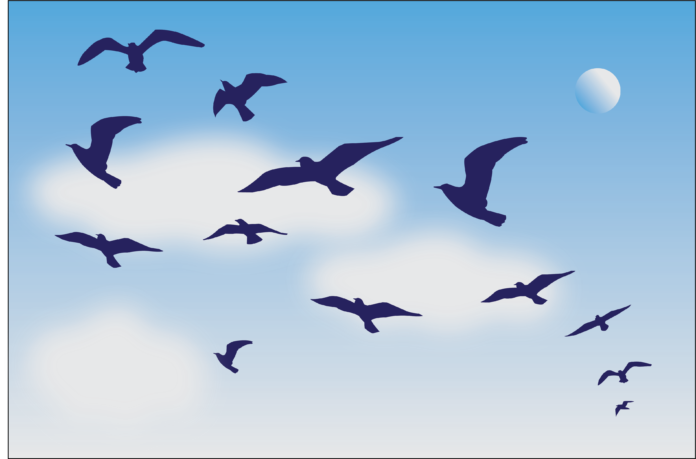Engineers hope to improve uncrewed aerial vehicles and make them more agile in the air by analyzing birds
By ARYAMAN BHATIA — science@theaggie.org
Engineers at UC Davis published a paper in the Proceedings of the National Academy of Sciences that highlights how gull wings adapt to atmospheric disturbances such as air turbulence. The findings of this study can be applied to modern aerial vehicles, enhancing their ability to access dangerous and unreachable areas during emergencies.
Aerial vehicles are designed to have two categories of flight: stable and unstable. Stable flight refers to the ability of the vehicle to return to its original position when faced with disturbances. Unstable flight occurs when the vehicle experiences a change from its original position due to disturbances.
“Almost all birds have the capability to switch between these two states,” according to Christina Harvey, assistant professor of mechanical and aerospace engineering. The engineers hope to learn to harness this ability and use it for man-made aerial flight.
In a 2021 study, Harvey discusses her work using low-fidelity computational fluid dynamic (CFD) models and various experiments with 3D models of gullwings in wind tunnels and measures the force they generate at certain moments. Generally, numerical CFD models are computer simulations of different fluid motions based on laws of conservation governing fluid motion. Determining the accuracy of these simulations is critical.
“The reason that’s useful is that I can use that to check the validity of numerical models,” Harvey said. “There’s a lot of aerodynamic models you can use computationally to estimate the forces at moments. We combined this experimental data with numerical data to check the accuracy of our numerical approach.”
By using this approach, researchers can see and verify thousands of wing shapes. In 2021, the team used this method to “validate a low order lifting line model that runs through lots of different wing shapes to confirm that it accurately estimated the lift and drag,” according to Harvey. With a validated model, Harvey and the team can identify the bird’s ability to change between stable and unstable flight.
Currently, stable aerial vehicles cannot be easily maneuvered, whereas unstable aerial vehicles can be more maneuverable but require more complicated control algorithms. By harnessing the ability to shift between these two forms of flight, aircraft may be designed that can be both easily maneuverable and reliable enough to fly in erratic airspaces, like urban areas.
The project also highlights the importance of interdisciplinary work in the field.
“Traditionally, we were told that you have to be an engineer or be a scientist or some other specific category,” Harvey, who has studied both biology and aerospace engineering, said. “I enjoy trying to think about problems from a biology perspective, and then combining that perspective [with an engineering perspective] is really helpful and fun. Developing a truly integrated interdisciplinary approach is something that I think is really valuable for the future.”
Written by: Aryaman Bhatia— science@theaggie.org





